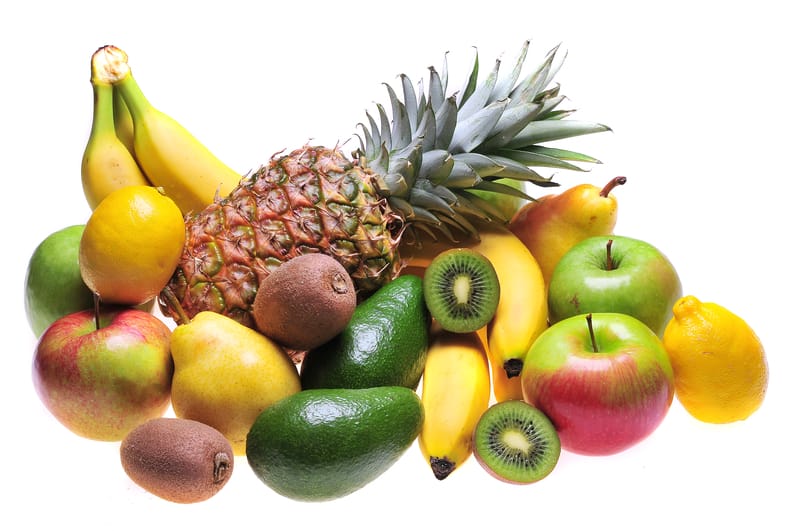Have you ever eaten a banana or an avocado and suddenly felt your lips itch or your throat feel strange? If you also have a latex allergy, you might be dealing with something called latex-fruit allergy — and you’re not alone.
❓What is Latex-Fruit Allergy ?
Let’s break it down in simple words:
Latex-fruit allergy is a condition where your body reacts to certain fruits because they contain proteins that are very similar to latex — the stuff used in gloves, balloons, and medical supplies. If you’re already allergic to latex, your immune system might think these fruits are a threat too. And that’s when symptoms start to appear.
🧠 Why Does Latex-Fruit Allergy Happen?
Normally, the immune system protects you from things like viruses and bacteria. But in people with latex allergy, the immune system gets confused and overreacts to a protein found in natural rubber latex.
Some fruits have similar proteins, so when you eat them, your immune system may attack as if you just touched latex. This is what doctors call cross-reactivity.
🍌Common Fruits and Foods That May Trigger a Latex Allergy
If you’ve been diagnosed with a latex allergy, it’s essential to watch out for these high-risk fruits and vegetables:
-
-
🍌 Bananas
-
🥑 Avocados
-
🥝 Kiwis
-
🍍 Pineapples
-
🥭 Mangoes
-
🍈 Melons (e.g., cantaloupe, honeydew)
-
🍓 Strawberries
-
🍒 Cherries
-
🥥 Figs
-
🍑 Peaches
-
🌰 Chestnuts
-
🥭 Passion fruit
-
These foods are known to contain proteins similar to those in latex. Reactions can vary from mild itching to more serious symptoms like swelling or even anaphylaxis in extreme cases. Not everyone reacts to all of these fruits, but even one or two could trigger symptoms, so it’s important to pay attention to how your body responds.
🖨️ Download This Chart:
Want to keep this list handy? Click here to download the PDF version of the Safe vs. Risky Fruits chart for latex allergy. You can print it or save it on your phone for easy access while shopping or cooking.
⚠️Symptoms of Latex-Fruit Allergy
Reactions can happen quickly — sometimes within minutes. Common signs include:
-
Itchy or swollen lips, mouth, or throat , These symptoms may also be part of oral allergy syndrome, which is closely related to latex-fruit allergy
-
Sneezing, runny nose, or asthma symptoms
-
Nausea, stomach pain, or diarrhea
-
In rare cases: anaphylaxis (a severe, life-threatening allergic reaction)
⚠️ Note: While anaphylaxis is rare in latex-fruit syndrome, it’s important to stay vigilant, especially if you’ve had severe reactions in the past.
🩺 How Do You Know If You Have It?
If you suspect you have a latex-fruit allergy, don’t guess. The best thing you can do is see an allergist. They might recommend:
-
Skin prick tests with the fruits or latex
-
Patch tests for delayed reactions
-
Blood tests to check for specific IgE antibodies
-
Medical History Review .Your allergist will ask about your symptoms, timing, and food exposure history.
These tests are safe and can give you a clear answer.
🥗 Do I Have to Avoid These Fruits Forever?
Not necessarily.
Here’s what you need to know:
✅ Some people react only to raw fruits. Cooking or baking can break down the allergy-causing proteins, making them safer to eat. For example, you might react to raw banana but not banana bread.
✅ Mild allergies may allow small amounts. Some people with light symptoms can eat small portions of the fruit without a problem, but this should only be done under medical advice.
✅ Moderate or severe allergy? Best to avoid completely. If you’ve had breathing problems, hives, or swelling, you’ll likely be told to avoid those fruits altogether — even in small amounts.
🥝 Are There Any Safe Alternatives?
Yes! There are plenty of fruits that don’t usually cross-react with latex, including
-
Apples
-
Blueberries
-
Grapes
-
Citrus fruits (like oranges and lemons)
-
Pears
-
Watermelon
-
Berries (like strawberries for some, though they can also be an allergen on their own)
Everyone is different, so it’s smart to test new fruits one at a time — especially if you’ve had reactions in the past.
💊 Can Latex-Fruit Allergy Be Treated?
There’s no permanent cure, but you can manage it.
Here’s how:
-
Avoid the trigger fruits, especially raw.
-
Always read food labels and ask about ingredients when eating out.
-
Carry antihistamines for mild symptoms.
-
Use an epinephrine auto-injector (like an EpiPen) if your doctor recommends it.
-
Talk to your allergist about new treatments like immunotherapy, which is still being studied but shows promise.
✅ What You Can Do Today
-
Make a food diary. Write down what you eat and how you feel afterward.
-
Get tested. Don’t rely on guessing — a proper diagnosis makes a huge difference.
-
Be prepared. Keep allergy medication nearby and let people close to you know what to do in case of a reaction.
-
Try alternatives. Explore fruits and recipes that are safe and enjoyable for you.
Download our free food allergy emergency plan template to stay prepared wherever you go.
Final Thoughts
Latex-fruit allergy can be confusing and sometimes scary — but with the right steps, you can take back control. You don’t have to give up fruit forever. You just need to know your body, know your triggers, and make smart choices.
If you’re unsure, talk to a doctor or allergist who understands cross-reactive food allergies. The sooner you understand your condition, the easier it becomes to live fully — and safely.

